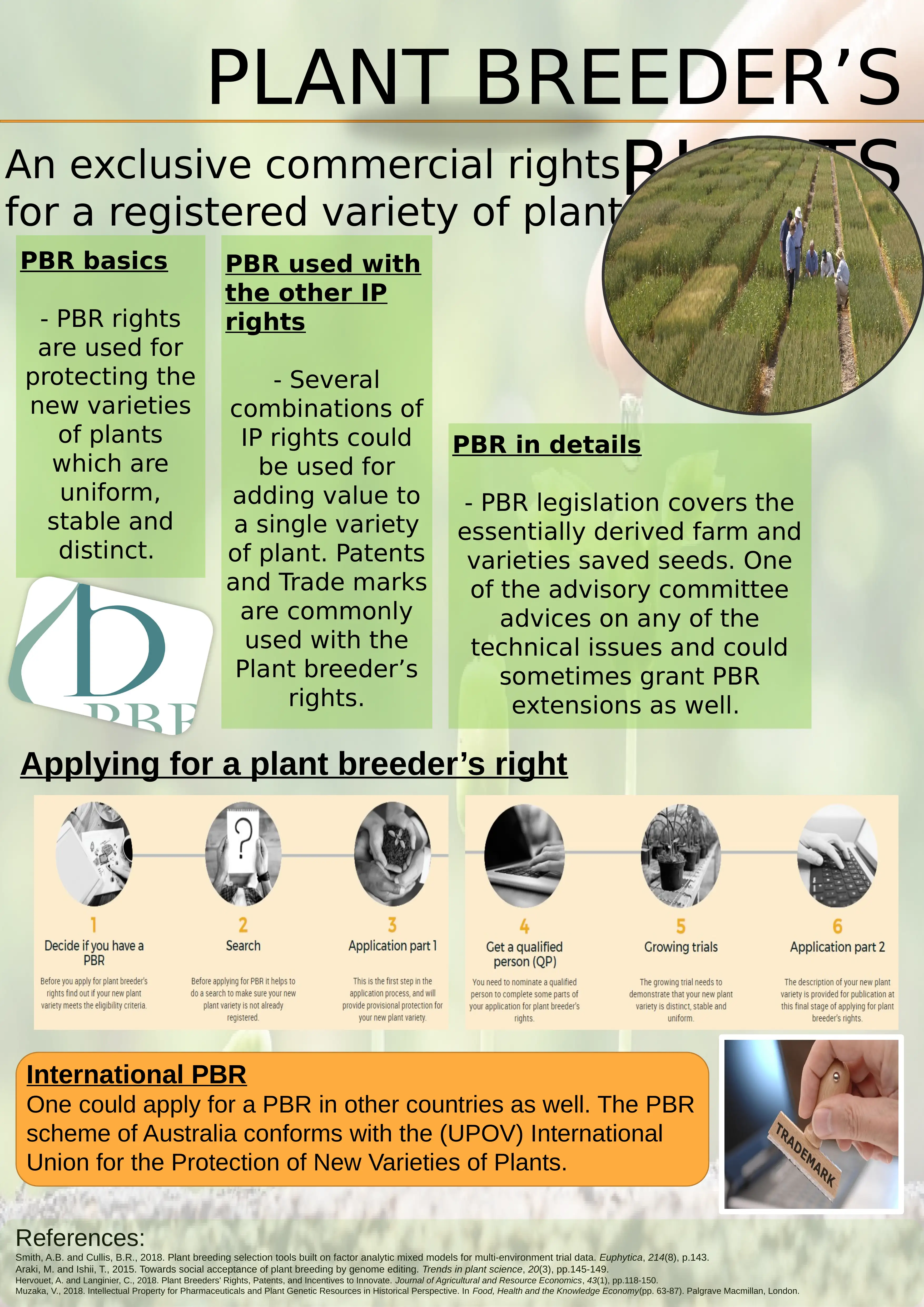Plant Breeder's Rights - Analysis of Variety Protection
VerifiedAdded on 2023/06/05
|1
|301
|476
Report
AI Summary
This report provides an overview of Plant Breeder's Rights (PBR), a crucial aspect of protecting new plant varieties. It explains the basics of PBR, its importance in the context of intellectual property, and its role in the agricultural sector. The report highlights how PBR functions to protect new plant varieties and its interaction with other forms of intellectual property, such as patents and trademarks, and how they are used in combination. It also mentions the legal framework surrounding PBR, including the role of international agreements like UPOV (International Union for the Protection of New Varieties of Plants). The report emphasizes the importance of PBR in fostering innovation and protecting the investments of plant breeders. Finally, it includes a discussion on the legal and regulatory aspects of PBR, including the requirements for obtaining and maintaining PBR, as well as the enforcement of PBR rights. The report concludes with a discussion on the future of PBR and its role in addressing the challenges of global food security and sustainable agriculture. The report also references relevant research papers to support the analysis.






![[object Object]](/_next/static/media/star-bottom.7253800d.svg)